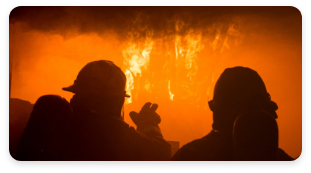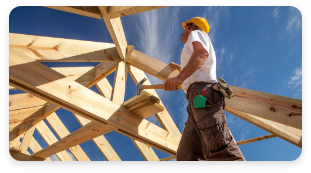Install quickly, quietly and securely
Are engineered for long service life
Won’t sustain a flame
Require less space for installation
Limit smoke generation
Are lightweight and durable
Require less installation time than metal systems
Allow flexibility of pipe size and structural design
Allow flexibility of pipe size and structural design
Have a natural immunity to pitting and corrosion
Are providing affordable fire protection to more homes and businesses
Review the BlazeMaster Fire Protection Systems’ international listings and approvals below for third-party verification of our fire safety system’s performance and reliability.
When exposed to fire, charring forms on the outer surface of the piping system. This forms a thermal barrier, restricting heat conduction, unlike steel pipe which carries heat.
It needs three times more oxygen than we have in the Earth’s atmosphere to burn, so it does not facilitate the spread of flames. As soon as the ignition source is removed, the flame extinguishes naturally.
BlazeMaster CPVC pipes and fittings hold the European Fire Classification of Bs1d0, the highest rating a plastic material can achieve:
BlazeMaster CPVC is specially engineered and approved for all light hazard applications, as defined by the LPS 1260 , BS 9251 (UK), BS EN 12845 and the American approvals NFPA 13/13R/13D.
BlazeMaster CPVC pipe and fittings are listed by BRE Global Loss Prevention Board (LPCB) and Underwriters Laboratories (UL and FM) for use in:

Light hazard occupancies as defined in the Fire sprinkler systems for domestic and residential occupancies BS 9251, the Standard for Fixed Firefighting Systems – Automatic Sprinkler Systems – Design, installation and maintenance BS EN 12845 and the American Standard for the installation of Sprinkler Systems NFPA 13.

Residential occupancies as defined in the Fire sprinkler systems for domestic and residential occupancies BS 9251, the Standard for Fixed Firefighting Systems – Automatic Sprinkler Systems – Design, installation and maintenance BS EN 12845 and the American Standard for the Installation of Sprinkler Systems in Residential Occupancies up to Four Stories in Height, NFPA 13R.

Ordinary hazard installations as defined in the Fire sprinkler systems for domestic and residential occupancies BS 9251, the Standard for Fixed Firefighting Systems – Automatic Sprinkler Systems – Design, installation and maintenance BS EN 12845 and the American Standard for the installation of Sprinkler Systems NFPA 13.
Before selecting ancillary products—such as fire stopping systems, thread sealants and system accessories—find products known to be compatible with BlazeMaster Fire Protection Systems. Each listed product undergoes formulation screening and rigorous physical testing in contact with Lubrizol CPVC samples at a third-party laboratory.
To qualify for inclusion in the FBC™ System Compatible Program, the manufacturer of auxiliary construction products must agree to:
Accepted products are given the right to display the FBC™ System Compatible mark on their labels. The FBC™ System Compatible Program program is free and easily accessible online. Find compatible and incompatible products, today. If you have questions or need specification support, contact us.
Handling and installing BlazeMaster CPVC is safe, efficient and risk-free for installers, their clients and communities.
Cutting and joining CPVC pipe and fittings is quick, easy and safe. Trained installers can create a strong, long-lasting joint for fire protection within minutes, using the solvent cement method of joining the pipe.
Solvent cement creates a bond between a CPVC fitting and a CPVC pipe by fusing them at the molecular level. This not only allows for consistently smooth water flow inside the pipe, but it forms the strongest parts of the whole sprinkler system’s structure.
Handling and installing BlazeMaster CPVC is safe, efficient and risk-free for installers, their clients and communities.
Cutting and joining CPVC pipe and fittings is quick, easy and safe. Trained installers can create a strong, long-lasting joint for fire protection within minutes, using the solvent cement method of joining the pipe.
Solvent cement creates a bond between a CPVC fitting and a CPVC pipe by fusing them at the molecular level. This not only allows for consistently smooth water flow inside the pipe, but it forms the strongest parts of the whole sprinkler system’s structure.
If a repair to a section of plumbing pipe is required, in many cases the installer will cut out the affected section and joint in a new section. This would require all the previous machinery and heavy equipment that come with it.


